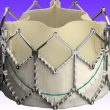Takayasu arteritis (TAK) is an uncommon granulomatous large-vessel vasculitis that affects the aorta and its primary branches. The most frequently types of observed vascular compromise are obstructive lesions, and aneurysmal vascular lesions or dissections. In 2021, the American College of Rheumatology recommended not to implement percutaneous intervention (PI) with these patients and only use immunosuppressive...
The Most Important Articles of 2022 in Structural Heart Disease
Discover the most read scientific articles on interventional cardiology of 2022 in our website. We Should Treat Significant Stable CAD in Patients Undergoing TAVR Aortic stenosis is associated to significant coronary artery disease (CAD) in nearly 50% of cases. When we decide to treat aortic disease using surgery, it has been established we should also treat...
Real-World Revascularization Strategy for Left Main Coronary Artery: Surgery or PCI?
There are many current randomized trials comparing percutaneous coronary intervention (PCI) with myocardial revascularization surgery (MRS) for the treatment of left main coronary artery disease (LMCAD). In the European Society of Cardiology guidelines, PCI is classified as Ia (LMCAD with low-complexity coronary disease) or IIa indication (intermediate complexity), whereas, according to the American Heart Association...
Is the PASCAL Device Effective against MitraClip?
Mitral regurgitation (MR) is the most common valvulopathy and full medical treatment at maximal tolerated doses has been shown quite effective to treat it. However, its limited in a group of patients that require valve intervention. At present, the ideal treatment is surgical valve replacement, which is in many cases is not viable because of...
Pulmonary Artery Denervation: Valid Alternative for Pulmonary Arterial Hypertension Grade 1?
Pulmonary vessels are densely innervated by sympathetic, parasympathetic, and sensitive fibers. According to the World Health Organization (WHO) pulmonary arterial hypertension (PAH) grade 1 consists of obliterating pulmonary vascular remodeling accompanied by a diminished generation of vessel dilators. Its pharmacological treatment has certain limitations and sympathetic pulmonary vascular denervation might be a valid treatment alternative,...
Valve-in-Valve Shows Good Evolution after 2 Years
The degeneration of bioprostheses in aortic position occurs at approximately after 10 to 15 years. In this scenario, the treatment of choice used to be redo surgery, but with the evolution of transcatheter aortic valve replacement (TAVR), it became a valid alternative with a level IIa B evidence. While there are currently multiple analyses of...
Post PCI FFR
Much research has been done on the usefulness of functional testing such as fractional Flow reserve (FFR) after percutaneous coronary intervention (PCI), resulting in the correlation of pathological FFR values with major adverse events at 6 months, as shown by Pijls, et al. The impact of post PCI FFR on prognosis has not been studied...
Long-Term Mortality in Non-Obstructive Lesions in the Left Main Coronary Artery
Left main coronary artery (LMCA) intervention with significant lesions on both coronary angiography and intravascular ultrasound (IVUS), either through angioplasty (PCI) or myocardial revascularization surgery (MRS), is directly related to a decrease in long-term adverse clinical events. However, the relationship between subclinical LMCA disease (preserved luminal diameters) and long-term mortality is still unknown. A retrospective...
See the Presentations of the 12th ProEducar Fellows Course
During SOLACI-SOCIME 2022, our traditional education program for young interventionists ProEducar Fellows Course was held. Discover the presentations of the prestigious interventionists that made part of this 12th edition here below. Dr. Leandro Lasave (ARG) – “Transradial access: When and how? Practical lesson for access without complications” PRESENTATION Dr. Alejandro Alcocer (MEX) – “Practical demonstration of aortic...
We Should Start Considering Pulmonary Hypertension After TAVR
Pulmonary hypertension is associated with higher mortality after both aortic valve replacement and transcatheter aortic valve replacement (TAVR). This is a dynamic phenomenon, and what happens after TAVR —during the periprocedure— and its impact are yet to be evaluated. Researchers conducted a subanalysis of the Japanese OCEAN TAVI Registry, which included 1872 patients who were divided...








